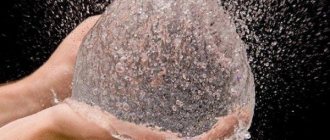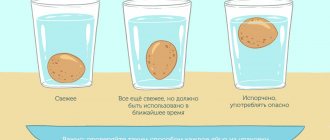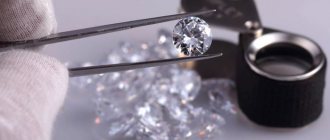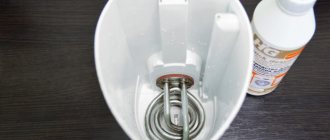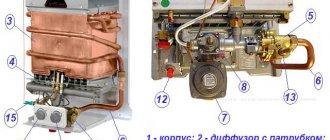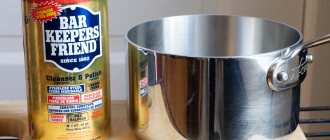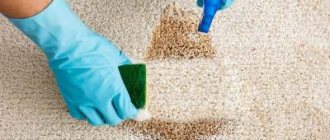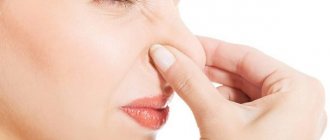- August 6, 2019
- Nutrition
- Daniil Belousov
Everyone knows perfectly well that water is life. Very often in everyday life the concept of hard water appears. By default, this definition immediately brings to mind some kind of discomfort. For example, it will be very uncomfortable to sit on a hard chair or sleep on a mattress. Hard people are more difficult to communicate with, etc. Many people believe that hard water only causes scale to appear in the kettle. However, this is the least problem that a person actually has to face. Hard water harms not only the home and household items, but also the person himself. Accordingly, health depends on this. Therefore, it will be useful to learn how to determine water hardness at home. It is also worth considering how to deal with such a problem.
Hard water
In simple terms, hard water is a liquid that contains large amounts of calcium and magnesium salts. If the water were chlorinated, then we could blame the disinfectants and the work of housekeeping services. However, calcium and magnesium enter the water solely depending on the region of residence of a person. That is, in this case, nature can only be blamed.
The fact is that water flows pass through lime deposits and, as a result, are saturated with a certain amount of minerals. However, in this case we are not talking about mineral drinking water. If we are talking about an excess of calcium salts, as well as magnesium, then this is far from healthy mineral water, but just hard. It has a lot of negative influences on people.
If we talk about how water hardness is measured, then in Russia this indicator is measured in degrees of hardness and milligram equivalent per liter - mEq/l.
Advantages and disadvantages of soft water
Soft water has its advantages and disadvantages. The benefits of soft water include:
- preventing the development of urolithiasis;
- the best taste of food and drinks prepared with this water;
- beneficial effect on skin and hair when swimming in this water;
- increasing the service life of heating elements and various household appliances operating on this water, the absence of scale.
The disadvantages of soft water, if used constantly, include:
- insufficient replenishment of the body with minerals;
- the likelihood of developing caries;
- the likelihood of developing hypertension and heart disease;
- the likelihood of developing diseases of the gastrointestinal tract;
- poor washability when washing dishes and laundry.
Simple tips
Why is hard water harmful?
First of all, of course, such water will negatively affect household appliances. For example, scale will begin to appear in a kettle, washing machine, dishwasher, and much more. It’s easy to guess that this will cause equipment to fail faster. This will entail additional cash expenses.
In addition, plaque appears on plumbing fixtures. This leads to the fact that the walls of plumbing and heating equipment begin to overgrow from the inside. As a result, they will have to be changed much earlier than planned.
Among other things, hard water leads to rapid fading of fabrics during the washing process. This entails premature wear of clothing. In addition, it becomes more rigid and unpleasant during wear. If a family lives in a region with hard drinking water throughout its life, then people may not even pay attention to it. However, any other person will notice that such liquid even changes the taste of tea, coffee and many other drinks.
This water affects the skin. They become dry. A person may experience itching, irritation, and some may even develop allergic dermatitis.
When using such water, it has a negative effect on the hair, it becomes drier and brittle. Hair begins to fall out much earlier, and if we are talking about a woman who uses hair dye, then it washes out much faster.
And finally, if we talk about health, then using hard water significantly increases the risk of urolithiasis. Also, such water negatively affects all digestive organs. Therefore, at the first opportunity, it is worth finding out how to test water hardness at home. What ways are there for this? Which of them will help determine the quality of the liquid accurately, and which will only help to superficially understand whether it is worth taking measures to clean the water supply?
Brief information note
Water contains magnesium and calcium; salts of these chemical elements affect the level of hardness.
There are three types of hardness.
- Temporary, or carbonate. Occurs when there are bicarbonates in the liquid. This problem can be easily eliminated - when heated, they form carbonic acid and precipitate. After boiling, the softness of the water increases.
- Permanent, or non-carbonate. Caused by the presence of strong salts in the liquid, for example, sulfuric or nitric acids. After heating, they do not disintegrate and do not form a precipitate.
- General. To determine, it is necessary to summarize the indicators for temporary and permanent rigidity.
The only danger for household appliances is carbonate hardness - it contributes to the appearance of scale and contamination of the mechanism.
For a person, general rigidity (at elevated levels) brings negative consequences.
Such water increases the consumption of household chemicals and personal hygiene products. The taste of food also changes (meat and cereals are poorly cooked); the condition of hair and skin deteriorates. The risk of kidney stones and cardiovascular disease also increases.
The easiest way
If we talk about how to check water hardness at home, then this method can be called the most affordable. But it only allows you to estimate in general terms whether it is really worth worrying about the condition of water pipes and household appliances.
If water hardness is increased, a layer of scale will form on the kettle spiral, taps, and metal surfaces of the washing machine and dishwasher. It is a fairly hard consistency of yellowish-gray color. But you need to understand that scale forms in any case, it all depends on the speed at which such precipitation appears. Therefore, you can clean the kettle and see how quickly a light coating appears in it.
However, this method of determining water hardness at home is not accurate. Therefore, it is worth considering other options.
Use a mirror
This method will allow you to guess how hard the water is flowing from the tap. But it will not give a specific meaning.
What you will need
- Mirror.
- Pipette.
- Distilled or boiled water.
What to do
Using a pipette, apply a drop of tap and distilled water to a horizontal mirror surface. Wait for the liquid to evaporate. And then analyze the two spots with sediment remaining on the glass.
The more saturated the sediment from tap water is, the more it differs from the almost imperceptible trace of distilled water, the higher the hardness.
Definition by locality
In this case, it is necessary to find information about water hardness indicators in a specific city or region. As a general rule, water hardness in city water should be less than 7 mEq/L. If the indicators are closer to 10 or more, then in this case we are talking about fairly hard water.
Of course, the lower the number, the better. However, information from the Internet is not always accurate. In addition, it is not updated very often. It is also worth paying attention to the fact that, as a rule, in large cities there are several sources of water. Therefore, the quality of indicators can vary greatly.
How is hardness measured?
The International System of Units considers the standard mol/m³. But this is a very inconvenient measurement system. Sometimes another conventional unit is used - Ppm (prop per mille). Each country has its own systems, so you need to build on the standards for which this or that measuring device is designed. In Russia, for these purposes they use their own indicator - degree of rigidity. For example, water with a temperature of 2 to 10 °F is considered to be of medium hardness. Although scale usually appears already at 4–5 °F.
Hardness salts
This is a fairly simple way to determine water hardness at home. The fact is that in the presence of hardness salts, worse foaming can be noted. Salts bind soap particles into insoluble components.
Therefore, the easiest way is to try soaping your hands and see how the soap base foams. If the detergent is difficult to wash off your hands and for a long time there remains a feeling that your hands are still soapy, then in this case the water, on the contrary, is soft.
If you want to know how to determine whether water is soft or hard, the easiest way is to buy any bottled water in the store and check the hardness level on the packaging. After that, take the same amount of soap and try lathering your hands using different formulations.
The maximum amount of foam is observed in soft water. If the soap foams weakly and settles fairly quickly, then most likely the water is of medium hardness. Well, if there is no foam at all, then in this case we are talking about the worst option. You can also pay attention to the “behavior” of the shampoo while taking a shower. If it rolls off the hair, does not foam and requires a much larger amount of composition to rinse the curls, then the water is quite hard.
However, even in this case, only a general idea can be obtained.
Types of softening devices
There are several main groups of specialized devices. Some are able to soften the drink, which is used for cooking and drinking. Others provide household appliances with a purified solution and allow you to wash in clean water.
The choice of device depends on the financial capabilities and goals of the buyer. In most cases, the following types of devices are purchased:
- filters in the form of a jug;
- built-in equipment with several degrees of purification;
- electromagnetic converters.
Let's consider the advantages and disadvantages of each of the presented types of devices.
Filter jug
This mitigation option is often chosen by apartment residents. The device is a jug with a compartment into which the solution is poured. It comes through a special cartridge containing carbon. The substance retains large particles, and the purified drink enters the lower compartment of the jug. Cartridges are selected depending on the purpose. Special filters for softening are also available.
The advantage of the device is its low cost and maneuverability. The jug takes up little space and is convenient to take outdoors. The disadvantages include the need to frequently replace components. Depending on the number of people living in the house, the cartridge will have to be changed every 1 to 2 months.
In addition, this filtration method is not considered the most effective. The largest suspended matter is retained, but the salt concentration decreases slightly. If there is a strong excess of aggressive substances, it is necessary to consider other cleaning methods.
Reagent-free devices
The following types of devices are embedded equipment. Devices can be embedded under the sink or directly into the water supply system so that it flows not only into the kitchen, but also into the bathroom.
Please note that devices take up a lot of space. The impressive dimensions of the filters must be taken into account when planning the installation. Most often, the equipment is mounted under the sink. Depending on the chosen type, filtration systems can be multi-stage. Some devices capture only large particles, while others remove even the smallest components. There is a function of ultraviolet radiation to destroy pathogenic microorganisms.
Choose a device that softens the water. Filters of this type perform their functions well, but will cost much more. But they do not require such frequent cartridge changes as jugs. Typically, components are replaced every six months to a year (depending on consumption).
Electromagnetic devices
The latter type of equipment is a filter that processes liquid using electromagnetic radiation. It connects to the electrical network and usually does not require tapping.
The emitters are magnets, so replacement of components is not required. The devices can last up to 20–30 years without failure. The use of electromagnetic waves against increased rigidity is effective. Although the devices are expensive, they quickly pay for themselves and do not require cartridge replacement. Therefore, experts recommend installing this type of equipment in homes where the content of calcium salts significantly exceeds the norm.
Increased water hardness is a problem that residents of megacities often face. An excess of substances threatens a person with serious illnesses, and also disables household appliances and contaminates dishes. Stiffness can be dealt with using home methods, or you can opt for specialized equipment. Filtering devices do a better job of cleaning tap water.
The most accurate water hardness test
If you need to obtain precise digital data, as well as the composition of the water itself, then in this case you will need to carry out laboratory tests. To do this, you can contact the sanitary and epidemiological station, where specialists, for a fee, will help not only determine the salt content, but will also help clarify the exact composition of the water and the impurities existing in it.
For example, it is quite possible that tap water contains higher levels of nitrates and hydrogen sulfide, pesticides and many other substances that have a negative effect on the body. Such analyzes are performed on a voluntary basis. However, if we are talking about an autonomous water supply system that was organized on a suburban area, then it is recommended that such studies be carried out without fail.
Immediately after establishing a new well, several steps must be completed. First of all, you need to open the tap and drain the water for half an hour. This is necessary in order not to take a sample of test liquid, which contains particles of stagnant water, metal, and much more. After this, you need to take a clean glass bottle and fill it with water. To do this, you can use a regular container from any purchased water. But it is not recommended to use containers for carbonated drinks, since dyes and chemical components may remain in them, which will seriously distort the indicators of subsequent studies.
Water intake is carried out extremely carefully to prevent too much exposure to oxygen. When the container is filled to the very neck, you need to tightly close the bottle with a lid and put it in an opaque bag. Within the next two hours, you must have time to deliver this test sample to the laboratory for testing.
Indicator test strips for determining water hardness
These are specialized tests that were designed specifically to determine water hardness. They are sold in pet stores, shopping centers, hardware stores or online. The indicator strips themselves are pieces of paper that are well impregnated with a reagent that can change its color upon contact with different liquids.
The kit includes detailed instructions that describe how to determine water hardness at home. It also describes which color is responsible for the presence of hard water. Some experts also do not recognize this method as accurate, since they agree that the result obtained cannot always be “read” correctly. In this case, we are talking about the fact that a person can see one color, but in fact it will be completely different. Therefore, it is recommended to carry out such testing several times.
It is also worth noting that, as a rule, these test strips are produced in Europe and other countries. Therefore, the instructions are not always clear to the Russian consumer. But even if everything is extremely clear, this test does not guarantee a 100 percent result. In this case, you can purchase a special device called a salinity meter. These devices allow you to determine hardness indicators depending on the level of electrical conductivity of the liquid.
However, when considering methods for determining water hardness, it is worth noting that this method is the most expensive. Therefore, you can either rent a measuring device or contact a specialist who will come to your home.
Having decided how to measure water hardness at home, it remains to figure out what to do if the indicators are not the best.
Measuring instruments
Today, there are two main ways to accurately determine salt content. In pharmacies or specialized stores, express tests and salinity meters are sold for those who keep an aquarium. The devices accurately determine the composition of the solution, highlighting the content of salts and other substances.
The disadvantage of using equipment is that it will not be cheap. However, everything pays off with the accuracy of measurements and the ability to carry out analysis yourself, without resorting to the services of quality laboratories.
